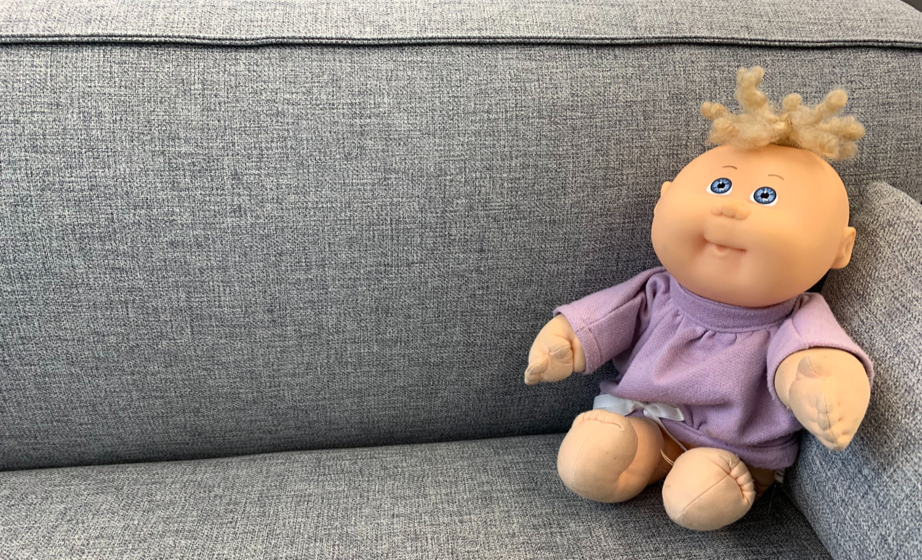
Consumer psychology strategies used in the Cabbage Patch riots

In 1983, a sensation occurred in the form of the Cabbage Patch Kids. The public’s desire for what was marketed as the ugliest doll in the world became so dire that literal riots broke out around the holiday season in retail stores across the country.
As Black Friday crowds loom and our holiday nostalgia kicks in, we wanted to know: Why were these dolls such a hit? We did some research and have a breakdown of the marketing tactics that tapped into the public’s psyche.
Personalization / Humanization
The Cabbage Patch Kids were one of the first toys that felt truly customizable. In addition to the variation of names, the dolls had different shades of hair, skin tones and eye colors.
While each doll felt different, the company set their brand apart from other toy collections on the market by creating a backstory. The Cabbage Patch “legend” was filled with Bunnybees, caves, crystals and, of course, cabbages.
The company’s origin story states the Bunnybees sprinkled “magic crystal dust on the mother cabbages and that magic causes Cabbage Patch Kids to be born.”
And the excessive details didn’t stop there. Each leg of the Cabbage Patch Kids’ journey was enamored with charming details. This gave the toy a humanlike quality thanks to the marketing team at the toy company, Coleco.
“They credit Alfred R.Kahn, senior vice president-marketing at Coleco, with realizing that there was something very special going on down in Cleveland, Ga.,” The New York Times reported in 1983. “There, an artist named Xavier Roberts, who makes soft sculpture, had set up a truly different doll factory in 1977. He calls it Babyland General Hospital, and women dressed as nurses administer an adoption oath and supervise the signing of adoption papers for the dolls. Cigars are also handed out.”
From Babyland General Hospital, consumers wouldn’t just buy a doll; they’d “adopt” one. Each came equipped with a birth certificate and adoption papers. Coleco leaned into this marketing and organized a very lifelike exhibition months before the infamous riots over these dolls erupted in stores across the country.
“To kick off its publicity circuit, the company held a press conference at the Boston’s Children Museum in June 1983,” according to an article on Medium’s Timeline. “Local schoolchildren attended and performed a mass adoption ceremony in front of the media cameras. Each kid got to take home a free doll.”
The marketing was clear: The Cabbage Patch Kids were more than toys. They were human.
Scarcity / Competition
Coleco knew what it was doing when they started to use scarcity to signal each toy’s uniqueness.
The New York Times reported a senior vice president at the company saying, “The key was understanding that kids also want to feel one-of-a-kind and say to themselves, 'No matter how I look, I'm special.’ ”
While marketers at Coleco used scarcity as a tool to signal each doll’s uniqueness, they did not predict the Cabbage Patch Kids would actually become scarce.
“Coleco grossly underestimated the dolls' appeal and there were shortages reported nationwide,” according to Syracuse’s website.
Parents had to suddenly worry — if their child didn’t have a doll, what would it say about their family?
Factories ran ten-hour days, seven days a week in an attempt to meet demand for the dolls, an NBC News video reported.
The limited number of toys led to insanely competitive situations in stores around the holidays. Syracuse reported that an advertisement by a department store in Elmira promised dolls, causing a thousand people to show up at the store’s opening. When the doors opened, the mob ended up trampling a woman.
The website also reported, “A near-riot happened at the Hills' department store in Charleston, West Virginia, when 5,000 people fought for the store's 120 dolls.”
These were just a couple of the countless reports of crazy crowds that led to people getting injured.
Word of mouth / Controversy
Obviously, media outlets spent a lot of time covering the masses gathering at department stores, demanding dolls — in addition to instances where people were injured because of said masses. But news of the Cabbage Patch craze spread before then.
The overwhelming amount of coverage started at the adoption event in front of the Boston Museum, which was a press circus. Some people thought this trivialized adoption, according to a 1983 article in Christian Science Monitor, adding to the existing conversation circulating about this shortly after.
While both the riots and the criticism of the adoption event, at times, veered negative, the word of mouth was still effective because it kept people talking.
Another topic circulating was about the dolls’ simple, “homely” appearance, making them so ugly that they were cute. It was said caring for these dolls would help with children’s emotional development — whether that was true is unknown.
The legacy lives on...
Today, Coleco still profits off of these consumer psychology tactics, specifically personalization and humanization.
The company’s website states: “Cabbage Patch Kids and Babies come in many sizes, color combinations and adoption fees. Each one is looking for someone to love, just like you! Choose the features you want or just take a look around.”
A button underneath reads: “See Adoptees!”
There’s a customizable birth certificate and customization option to “make your baby uniquely yours.”
In retrospect, the fact that riots broke out over the Cabbage Patch Kids is not shocking. It was the perfect storm of marketing psychology that hit the winter of 1983.

Andrea Gonzales-Paul is a brand journalist at Quikly. Her background is in storytelling, specifically working in TV news and documentary filmmaking.

